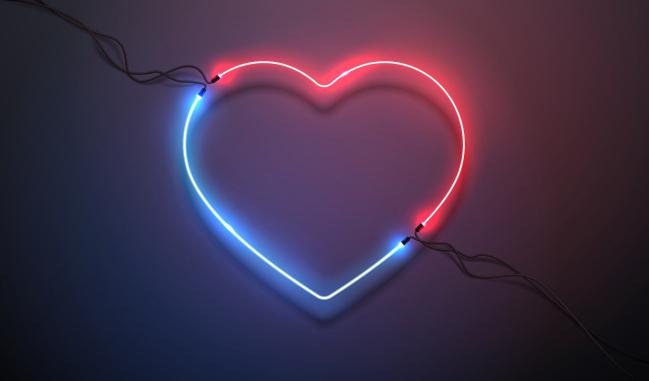Leadless Pacemaker Prototype Uses Heart’s Energy to Partly Power Device
The amount of energy generated was small, but it’s hoped the technology can prolong the battery of a tough-to-retrieve device.

An experimental leadless pacemaker is able to capture enough energy from the heart to partially power the device, according to results from a new proof-of-concept study.
The prototype device harvested roughly 10% of the energy that would be needed to power the heart’s next beat based on average pacemaker output by tapping into fluctuations in pressure. In harvesting this energy, investigators showed, the prototype could partially recharge the battery and potentially augment how long it lasts.
“One challenge with leadless pacemakers is that they reside in the heart,” lead investigator Babak Nazer, MD, (University of Washington School of Medicine, Seattle), told TCTMD. “When the battery is up, you have two options. You can put in a new one right next to the old one, but usually the first one is put in the best location so you’re comprising safety a little bit. At some point you’re going to fill up the right ventricle with a device that’s about half the size of a AAA battery. It’s not a trivial space. The other option is to retrieve them.”
At least one leadless pacemaker is marketed as retrievable, he added, but that’s based on very short-term data. After a decade of life inside the heart, it wouldn’t be an easy proposition to remove it.
Depending on the pacing parameters, the battery of a leadless pacemaker lasts anywhere from 5 to 15 years. Nazer, who will present his findings this Monday at the American Heart Association Scientific Sessions, said that while the leadless technology has been revolutionary in helping to avoid the pitfalls linked with leads, in his clinical experience they are usually not given to younger patients who would be expected to outlive the battery.
Energy Harvested From Pressure Changes
Harvesting energy to extend battery life is not a new concept, Nazer told TCTMD. Other research groups have tried to use the heart’s natural energy to power sensor systems or other implantable devices. The broad goal is to convert energy from mechanical, thermal, or biochemical sources into electrical energy. Ultrasound, for example, converts electrical energy into pressure or sound.
Here, researchers harvested energy from pressure changes through a housing made from biocompatible “piezoelectric” materials, which can convert changes in pressure into electrical voltage.
“Right now, [leadless pacemakers] have an inert outer shell,” said Nazer. “They’re designed mainly just to be biocompatible. What if we developed the piezoelectric material to basically become that shell? Replace the current shell with a piezoelectric? It can be sitting in that ventricle, it can be exposed to that high systolic pressure/low diastolic pressure, and then we reverse the piezoelectric effect to convert that pressure into energy.”
The researchers engineered three prototype devices and placed them in a cardiac pressure simulator to test their voltage output in response to pressure changes. At oscillating pressures of 40 and 0 mm Hg, which mimics the pressure changes in the right ventricle, the prototypes generated 4 V, which corresponded to 52.5 nW of harvested power. Under their pacing model, the prototype harvested about 10% of the energy the pacemaker would need.
What if we developed the piezoelectric material to basically become that shell? Babak Nazer
“I would say that estimate is just based on how much energy is needed to pace the next beat,” said Nazer. “A device does have a lot of other functions. It has a routine maintenance function and every time you connect by Bluetooth there's a little bit of a current drain there, too. It’s a little hard for us to simulate all that because the companies keep all that data proprietary. . . That 10.9% will probably go down a little bit if you factor in all the other housekeeping functions of it.”
Still, Nazer remains hopeful for the future, noting that this project, which included the work of mechanical engineer Mohammad Malakooti, PhD (University of Washington), along with graduate students Abigail Gilstrap, MS, Jedi Biswas-Diener, MS, and Kevin Tang, MS, came to fruition after about 6 months. Next steps needed to improve the efficiency of energy harvesting will include optimizing materials, geometries, and fabrication.
“We're not going to become a pacemaker company from scratch,” said Nazer. “This is the kind of project that—if and when we show progress—would be best partnered strategically with one of the large medical device companies.” The goal, he added, would be to move beyond in vitro to in vivo testing down the road.
Kenneth Ellenbogen, MD, PhD (VCU School of Medicine, Richmond, VA), commenting on the study in an AHA video for the media, called the concept of energy harvesting an “amazing idea.”
“We don't yet have a prototype we can implant in human beings yet, but something like that can maybe prolong the life of a pacemaker battery from 10 or 12 years to 15 or 20 or 25 years,” Ellenbogen said. “Wouldn’t that be nice for patients that wouldn't have to need a pacemaker generator replacement?"
Michael O’Riordan is the Managing Editor for TCTMD. He completed his undergraduate degrees at Queen’s University in Kingston, ON, and…
Read Full BioSources
Nazer B, Gilstrap A, Tang K, et al. An energy-harvesting leadless pacemaker: proof of principle. Presented at: AHA 2023. November 13, 2023. Philadelphia, PA.
Disclosures
- Nazer reports no relevant conflicts of interest.





Comments